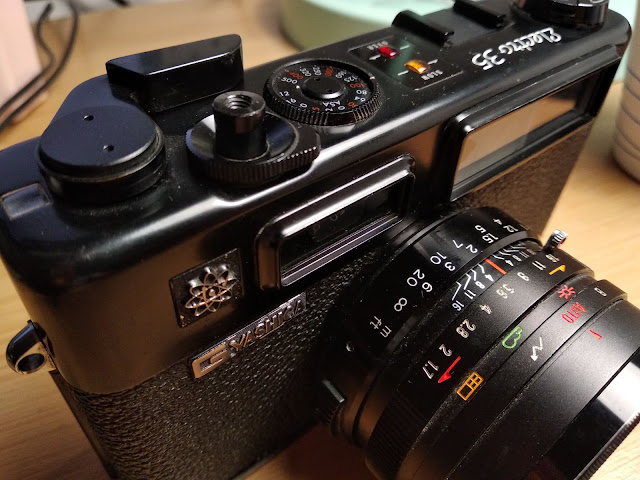Scanning negatives with Epson V550
Before buying my scanner I did a lot of research and finally went for EPSON V550. I knew a lot about this model, read a lot of positive reviews, but there were still couple of things that surprised me.
1. Standard frame holders don't allow to scan negative with border
This was slightly disappointing, as I wanted to do couple of those fancy images where entire area of negative is visible, including all the film markings outside of picture. It turned out that this is not possible when using frame holders that came with the scanner, even though scanning area is big enough to include them. Workaround for this is to make your own frame holder, which is not very convenient to use. This applies to both, medium format 120 film as well as 135 film.This might not be a big issue, however, some cameras, like Fuji GA645 imprint exposure information on the area outside of picture, so you can later see at what aperture, shutter speed, date and time particular picture was taken - such information can be useful.
2. Scanning 135 film is fast
You probably bought this scanner to scan medium format 120 film, and not 35mm film, as the smaller film can be handled by many more, less expensive scanners. However, as you probably are into many formats of analogue photography, there is a change that you also have 35mm negatives.Standard film holder is great for that because it can hold TWO strips of film, which greatly improves scanning speed, as you can scan 12 frames at once.
3. Scanning software is great
There are people who get pretty decent scanning results without using scanners - they use DSLR with macro lens and some DIY frame holder and lighting. That's fine. But it's not convenient. What's more, reversing colours in post production can be difficult. I mean, a simple reverse won't do the trick, as the film has different colour tones than digital. You have to do a lot of adjustments to get most out of your neg, and it takes time. Furthermore, you have to adjust and crop each frame separately and be very precise when setting all the equipment (BTW: can you set your camera perfectly parallel to the surface of the table? I know I can't).Software that comes bundled with the scanner (or downloaded from scanner's official webpage) does it for you, and while it's not perfect, it does really decent job. You basically get proper colours straight away. You can of course tweak brightness, white balance, curves and a lot of other things if you like, but most often, default settings give great results.
4. Cut your strips to proper length
I had some of my negatives cut before I got the scanner. I cut them to the length suitable for my negative folder. However, as it turned out, they were too long at 5 6x4.5 frames (which neatly makes three strips out of 15 frame roll), so they don't fit the scanner's negative holder. Now I cut them to 4 frames, and even though this means additional negative replace in the holder, it's still worth it.So there you have it. Above points might not be new to you, but hopefully will help somebody when making decision about buying this or any other scanner.
There's also one more thing to note. The Epson V550 scanner (and many others) have a built-in technology allowing them to automatically remove scratches and dust when scanning. In case of EPSON this is called Digital ICE. It works by doing two passes over your negative: first scans the actual image, second scans it with different type of light (infrared) and then uses that information to remove scratches. All is nice and fun, when you are scanning colour negatives. However, Digital ICE technology doesn't work with silver-based negatives (B&W), because of the way infrared lighting interacts with silver molecules in the negative. You'll have to disable Digital ICE when scanning B&W negatives, otherwise you'll get grey mess. Also note that enabling Digital ICE greatly increases scan time.
Hope you found this useful!
Cheers.

Comments
Post a Comment